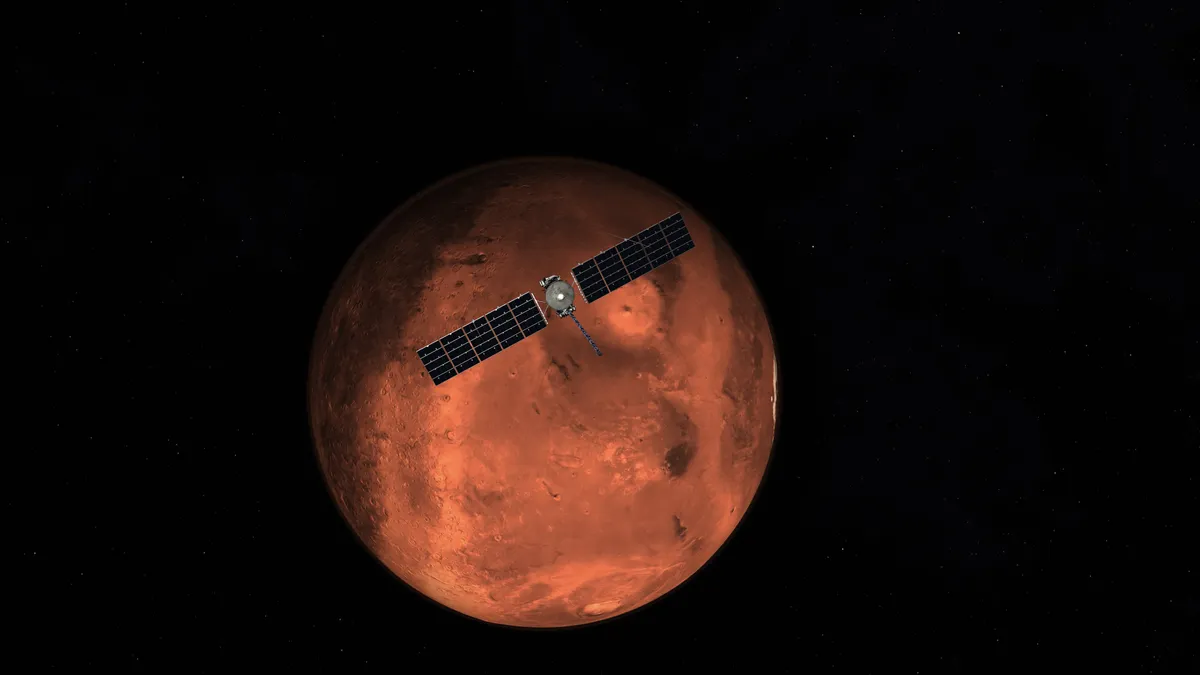
On March 1, NASA's Europa Clipper spacecraft is scheduled to make a remarkable flyby of Mars, passing just 550 miles (884 kilometers) above the surface of the Red Planet. This crucial maneuver is designed to adjust the spacecraft's trajectory, positioning it for a significant phase in its ambitious journey of 1.8 billion miles (2.9 billion kilometers) toward the Jupiter system.
The primary destination of the Europa Clipper is Europa, one of Jupiter's most fascinating moons, which is enveloped in a thick layer of ice that is believed to conceal a vast ocean, likely rich in salt. Scientists are intrigued by Europa as they suspect it may possess the essential ingredients for life as we know it. This mission, costing approximately $5.2 billion, is NASA's first dedicated effort to collect data that could help determine the habitability of Europa and other ocean worlds.
The Europa Clipper boasts an impressive design; its massive solar arrays span the length of a basketball court, making it the largest spacecraft ever constructed by NASA for a planetary mission. After its launch from Nasa's Kennedy Space Center in Florida on October 14, 2024, the spacecraft was placed on a path that included a buffer zone around Mars. This precaution was implemented to avoid any potential collision with the planet in case of unforeseen issues following the launch.
Fortunately, the Europa Clipper has operated flawlessly, allowing mission controllers to command the spacecraft to approach Mars' orbit in November of last year. This was followed by two additional maneuvers in January and February, setting the stage for today's important flyby of the Red Planet. The planned trajectory around Mars will enable the spacecraft to harness the planet's gravity, allowing it to conserve propellant while adjusting its path. As Ben Bradley, a mission planner at NASA's Jet Propulsion Laboratory, explains, "It's like a game of billiards around the solar system." The precise timing and angles are crucial for successfully building the necessary energy to reach Jupiter and Europa.
The spacecraft is set to reach its closest point to Mars at 12:57 p.m. EST (1757 GMT), traveling at speeds of approximately 15.2 miles per second (24.5 kilometers per second). During this flyby, the probe will utilize Mars' gravity to adjust its trajectory, effectively "pumping its brakes" as it passes by. After departing from Mars, the spacecraft will continue at about 14 miles per second (22.5 kilometers per second).
This flyby also presents an invaluable opportunity for the mission team to test two onboard scientific instruments. Engineers plan to activate the spacecraft's thermal imager to capture multicolored images of Mars. Additionally, the Europa Clipper's radar instrument will undergo testing to ensure it is functioning correctly. Notably, the radar antennas are so large that they could not be fully tested on Earth, making this flyby the first occasion for all components to be assessed together.
The Europa Clipper's trajectory is meticulously planned, as explained by Brett Smith, a mission systems engineer at NASA's Jet Propulsion Laboratory, "We come in very fast, and the gravity from Mars acts on the spacecraft to bend its path." This complex maneuvering allows for a small amount of energy exchange with the planet, setting the stage for a return path that will lead the spacecraft back past Earth.
The anticipated flyby around Earth is scheduled for December 2026, positioning the spacecraft for a straightforward journey to its ultimate destination, with arrival at the Jupiter system projected for April 2030.